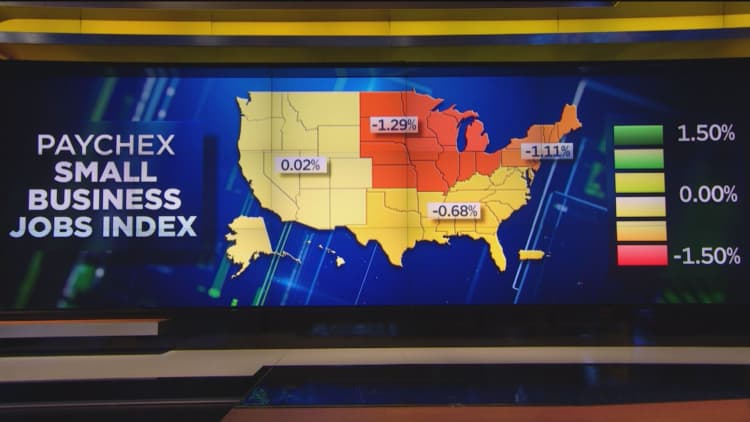
Employment costs rose more than expected in the third quarter in a sign that more inflation could be brewing in the U.S. economy.
The Labor Department's employment cost index rose 0.8 percent for the period, ahead of the estimate of 0.7 percent from economists surveyed by Refinitiv.
Wages and salaries rose 0.9 percent, well ahead of expectations for 0.5 percent. Benefit costs were up 0.4 percent.
On a yearly basis, wages and salaries jumped 3.1 percent, the biggest increase in 10 years.
Wage increases have been the missing link in the economy since the recovery began in mid-2008. Average hourly earnings have been rising steadily but have stayed below the 3 percent level as slack has remained in the labor market.
However the unemployment rate is now at 3.7 percent, the lowest since 1969, and wage pressures have begun to build. The Federal Reserve has been raising interest rates in an effort to stave off future inflationary pressures, though the central bank's preferred gauge of inflation rose just 2.5 percent in the third quarter, including a 1.9 percent increase for health benefits.
"The employment cost index data adds to the broader evidence that wage growth has continued to trend gradually higher over recent quarters," Michael Pearce, senior U.S. economist at Capital Economics, said in a note. "And with labor market conditions still tightening, we expect wage growth will accelerate further from here."

The wage data came the same day that ADP and Moody's reported private payroll growth of 227,000 in October, easily beating Wall Street expectations. The combination of news sent Treasury yields higher in morning trading.
Overall compensation costs for civilian workers rose 2.8 percent, tamped down in part by the small rise in benefit costs, which rose 1.9 percent for the 12-month period ending in September. Employers have been looking for non-salary measures to retain workers, but may have to start increasing wages to attract and retain talent.
In addition to the tighter job market, various states, communities and private companies have passed minimum wage increases, adding to inflation pressures.
At an occupational level, compensation costs increased 4.8 percent for information technology and 3.5 percent for sales and office and service occupations.
State and local government compensation costs rose just 2.5 percent, just one-tenth of a point more than the increase for the same period a year ago.
WATCH: Trump's economy: Here's where he gets credit, and what could go wrong



